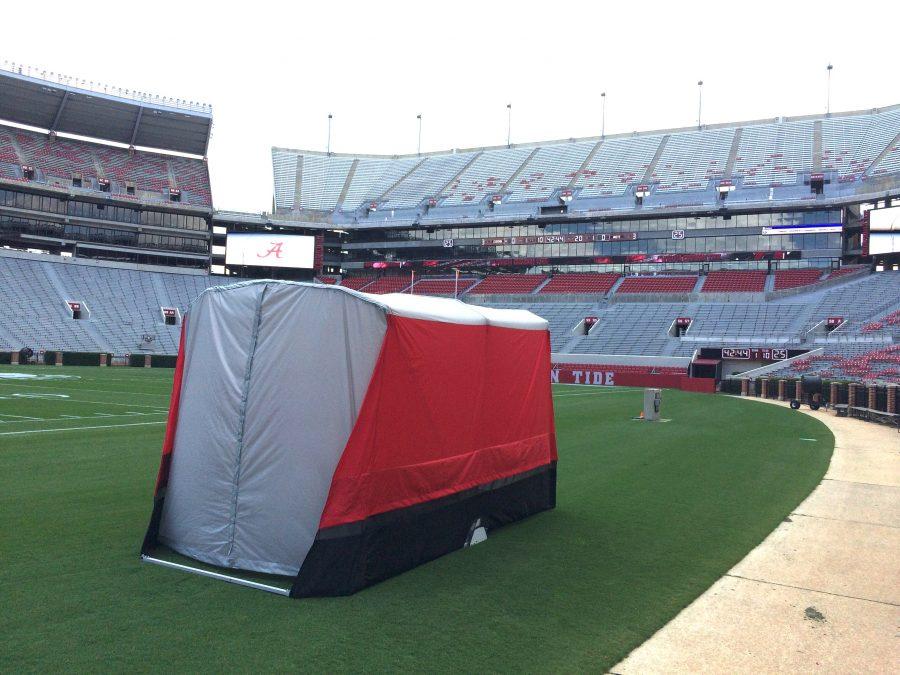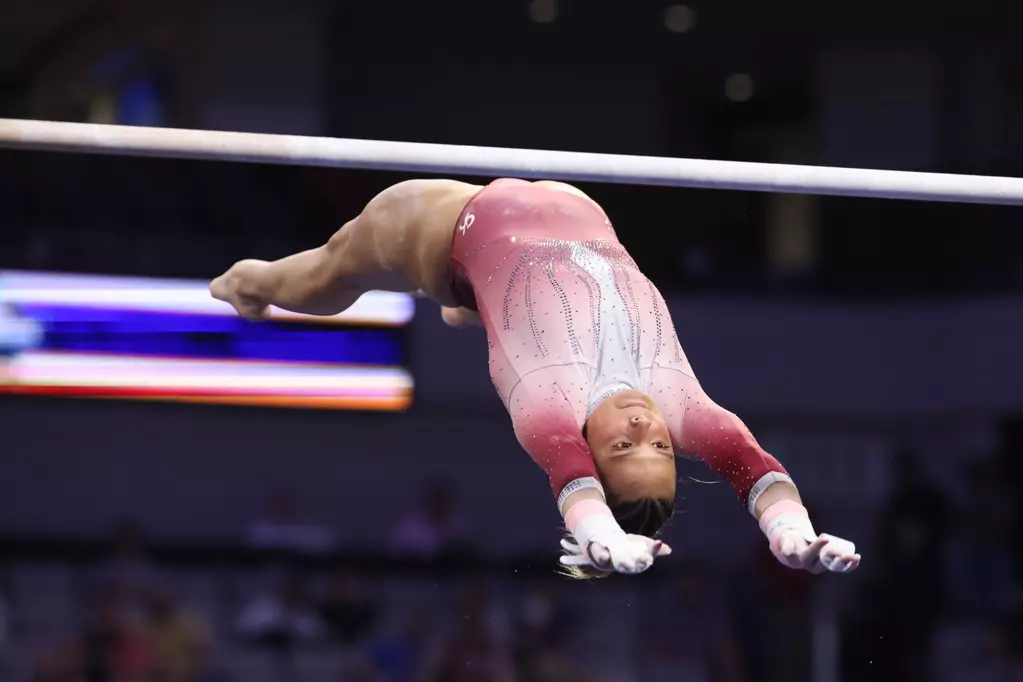The tent does not have an official name yet, but it has seen the sideline of every home and away game, minus the season opener against Wisconsin.
Assistant athletic director of sports medicine Jeff Allen came up with the overall idea in light of the emphasis increase on safety and well-being of athletes, especially in football. With that in mind, he started to brainstorm ideas that would help benefit sideline evaluation of injuries.
“Those first ten minutes after an injury are really critical for us to get a good evaluation and a good diagnosis of what a player has and then determine how we’re going to deal with it and develop a treatment plan,” Allen said.
Soon enough, he came up with the idea of a collapsible medical tent. He presented the idea to the College of Engineering dean, Chuck Karr, who quickly put four mechanical engineering students on the project.
Allen originally didn’t expect the project to be finished for this 2015 football season, but when the students approached him with a plan, they said it could be done and ready to use in time.
The students started in May. Patrick Powell, one of the four working on the project, said everyone put in 25 to 30 hours of work a week for at least two months. After two prototypes, the students were satisfied with their third finished product and that was that.
It wasn’t ready in time for Alabama’s game against Wisconsin, but it was there on the sidelines of Bryant-Denny for its game against Middle Tennessee.
Jared Cassity, another one of the four students that worked on the project, said he was extremely proud when it went up that first time.
“I was at that second game when it went up,” he said. “Unfortunately, a player was injured and had to go in. When I saw the tent go up, I was the only one standing in our section of the crowd screaming, ‘Yeah!’ ”
The tent is seven feet tall and 16 feet wide when in its extended state. It weights about 70 pounds and when it is fully collapsed, can be easily carried by two people. It is made up of aluminum in order to avoid corrosion and remain durable.
“It’s meant to take a hit if it has to,” Cassity said.
The best part, along with its portability, is it can be raised and lowered in 10 seconds.
“That’s what separates it from, say, a traditional tent that you would see used in tailgating,” Powell said. “You put it up, it takes four people, and it’s up for a good amount of time.”
The tent is also UV and water resistant, which came in handy at the Georgia game. Allen said he wasn’t sure how the tent was going to hold up against the amount of rain it faced in Athens, but it did so phenomenally.
“Matter of fact, a couple of times I think I said, ‘I’m just going to raise the tent and stay out of the rain for a little bit,’” he said.
Overall, the students and Allen are satisfied with how the tent has functioned.
Yes, having a tent is convenient to do examinations and diagnoses, however, that’s not the most important and beneficial part to it. Considering the players’ privacy has become a big priority.
“When you’re doing an evaluation on the sideline, clearly there a bunch of distraction, not to mention the privacy issue of the players,” Allen said.
Before the tent, the medical team would hold up Gatorade towels to try and give the player some privacy. That didn’t work too well.
Allen said the privacy the tent allows a player is the best part. It helps the players relax and allows the medical team to examine and determine a diagnosis without every fan in the stadium watching its every move.
Allen compared it to someone being examined by a doctor in the waiting room and how uncomfortable that would be. It’s the same thing for the players when they’re being examined on the sideline, but now, with the tent, that’s no longer an issue—
“I think that is the biggest thing –protecting their privacy and giving them an environment that they can feel comfortable in,” he said.
The tent has been a success so far this season and other schools are noticing and contacting Allen about getting one of their own.
For the students who designed and created the tent, seeing it become such a success and even recognized on ESPN has been rewarding. What Powell said started as just scratches on a white board have turned into a real world product.
“It’s a great feeling to know that your work is being recognized in that way, but it’s also being beneficial to the players and the College of Engineering,” he said.









